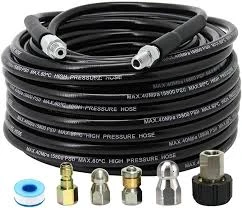ford ranger power steering hose replacement
Replacing the Power Steering Hose on a Ford Ranger A Comprehensive Guide
The power steering system in your Ford Ranger is crucial for providing a smooth and effortless steering experience. One of the key components of this system is the power steering hose, which carries fluid from the power steering pump to the steering gear. Over time, these hoses can become worn, damaged, or leaking, leading to diminished steering performance and potential damage to the power steering pump or steering gear. If you suspect that your power steering hose needs replacing, follow this comprehensive guide to ensure a successful replacement.
Tools and Materials Needed
Before diving into the replacement process, gather the following tools and materials
1. New power steering hose (specific to your Ford Ranger model) 2. Socket set and ratchet 3. Wrench set 4. Screwdriver set 5. Fluid catch pan 6. Power steering fluid 7. Pliers or hose clamps 8. Safety goggles and gloves 9. Rags for cleanup
Step-by-Step Replacement Process
1. Safety First Ensure the vehicle is parked on a level surface, engage the parking brake, and turn off the engine. It’s always a good idea to wear safety goggles and gloves when working on your vehicle.
2. Locate the Power Steering Hose Open the hood and locate the power steering pump, which is usually near the front of the engine. The power steering hose connects the pump to the steering gear, typically running along the engine bay.
3. Drain the Fluid Place a fluid catch pan beneath the vehicle to catch any leaking power steering fluid. Carefully remove the caps from the power steering pump reservoir to allow the fluid to drain.
ford ranger power steering hose replacement

4. Remove the Old Hose Using the appropriate wrench or socket, loosen and remove the bolts or clamps that hold the old power steering hose in place. Be prepared for some fluid to escape as you disconnect the hose. Make sure to take note of how the hose is connected for reference during installation.
5. Install the New Hose Take the new power steering hose and connect it to the same points where the old hose was attached. Make sure to tighten it securely, ensuring there are no leaks. It’s important to check that the hose is routed correctly to avoid rubbing against other components.
6. Refill Power Steering Fluid After the new hose is installed, refill the power steering pump reservoir with fresh power steering fluid, following the manufacturer’s recommendations for type and amount.
7. Bleed the Power Steering System To remove any air from the system, start the engine and turn the steering wheel from lock to lock several times. This will circulate the fluid and ensure that all air bubbles are purged from the system. Check the fluid level and add more if necessary.
8. Check for Leaks While the engine is running and the steering system is being bled, visually inspect the newly installed hose for any signs of leaks. Tighten any connections if necessary.
9. Final Touches Once you have confirmed that there are no leaks and the fluid level is appropriate, replace the reservoir cap and clean up any spills with rags.
Conclusion
Replacing the power steering hose on your Ford Ranger is a straightforward process that can significantly improve your vehicle’s steering performance. Regular maintenance of this system is essential not only for your driving comfort but also for your safety. If you feel uncomfortable performing this task yourself, don’t hesitate to consult with or hire a professional mechanic to ensure it’s done correctly. With the right tools and approach, you can restore your Ranger's steering prowess in no time!
-
Ultimate Spiral Protection for Hoses & CablesNewsJun.26,2025
-
The Ultimate Quick-Connect Solutions for Every NeedNewsJun.26,2025
-
SAE J1401 Brake Hose: Reliable Choice for Safe BrakingNewsJun.26,2025
-
Reliable J2064 A/C Hoses for Real-World Cooling NeedsNewsJun.26,2025
-
Heavy-Duty Sewer Jetting Hoses Built to LastNewsJun.26,2025
-
Fix Power Steering Tube Leaks Fast – Durable & Affordable SolutionNewsJun.26,2025

